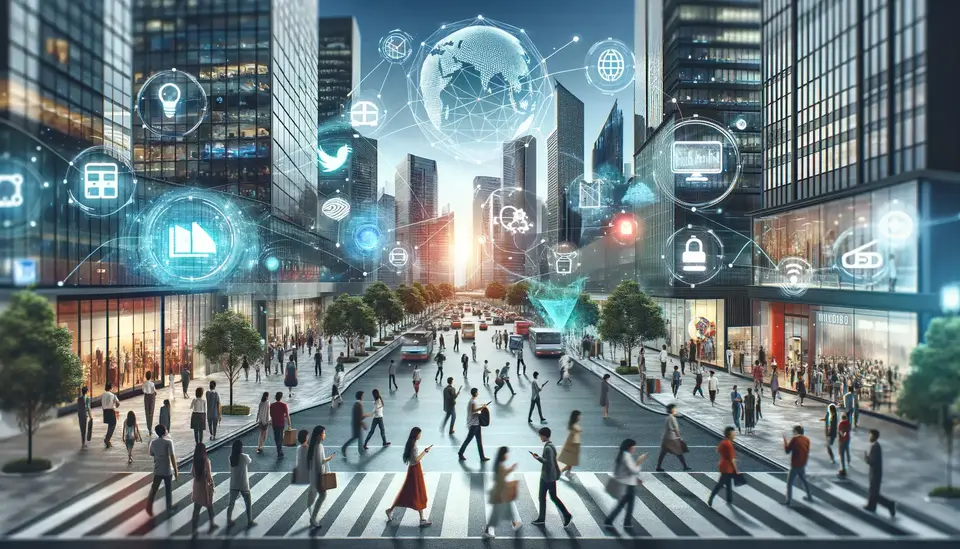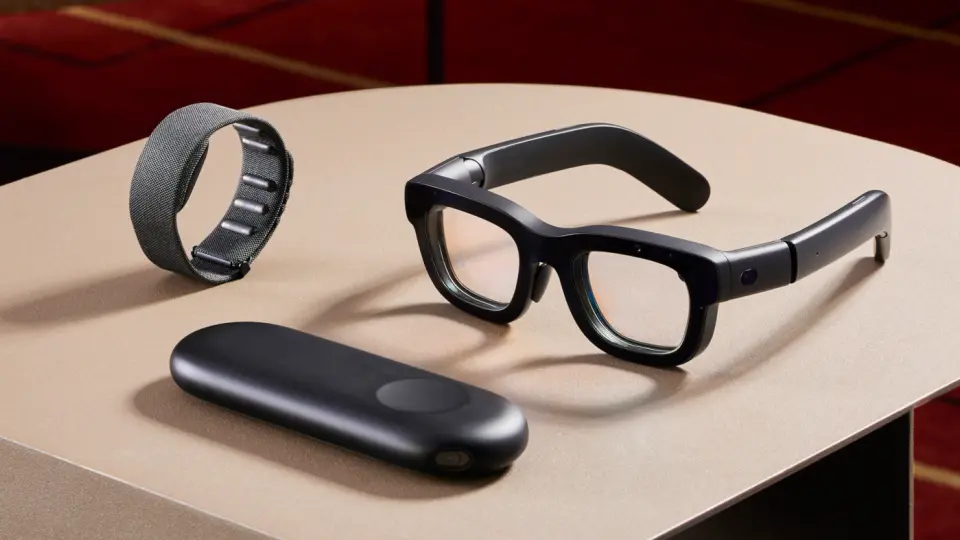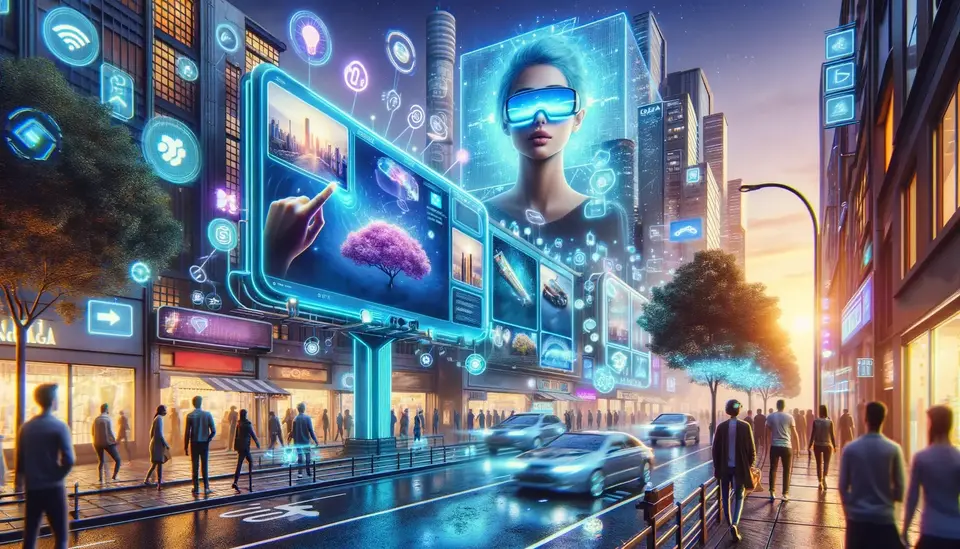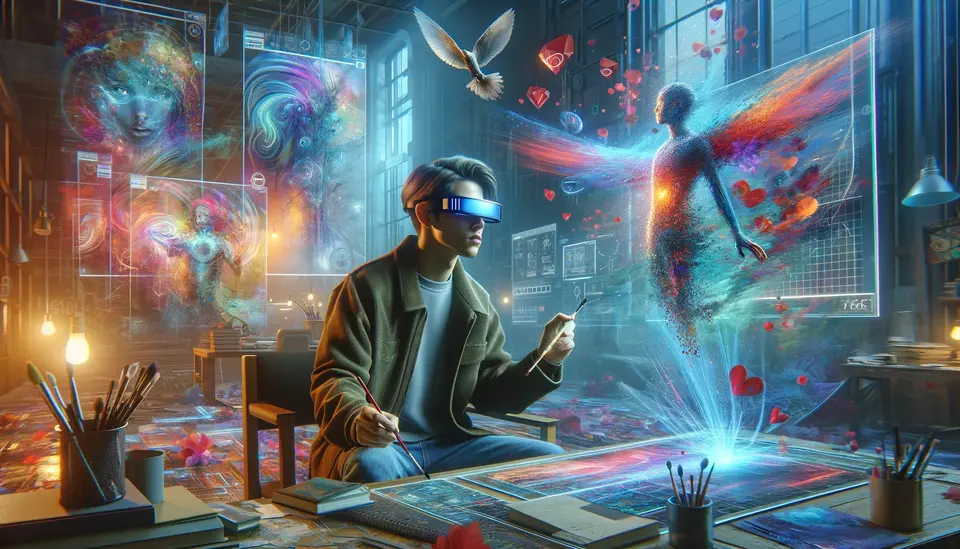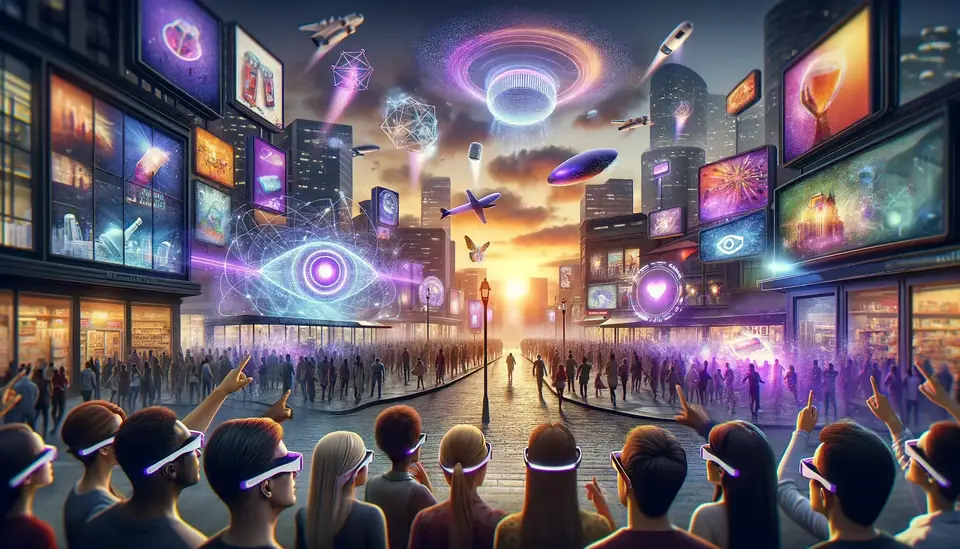Real Examples and Use Cases of Augmented Reality (AR) in Marketing
Posted on January 31, 2024 8 minutes 1499 words
Table of contents
- Introduction
- Understanding Augmented Reality in Marketing
- Industry-Specific Examples of AR in Marketing
- Technological Aspects Behind AR Marketing Strategies
- The Future of AR in Marketing
- Conclusion
Introduction
In today’s rapidly evolving digital landscape, the fusion of technology and marketing is creating unprecedented opportunities for brands to engage with their audiences. Among these technologies, Augmented Reality (AR) stands out for its ability to bring digital elements into the real world, offering a unique and immersive experience for consumers. This blog post delves into the practical applications of AR in marketing, showcasing real-world examples that highlight its potential to transform customer engagement.
Understanding Augmented Reality in Marketing
Augmented Reality (AR) in marketing is about overlaying digital information – such as images, sounds, or other data – onto the real world. This integration of virtual components with physical reality creates a hybrid experience that can captivate and engage consumers in novel ways. AR’s impact on marketing is profound, offering brands innovative avenues to connect with their audience. From interactive advertisements to virtual product trials, AR technology is not just a gimmick but a tool that enriches the customer experience, drives engagement, and potentially boosts sales. Its appeal lies in its ability to create memorable, interactive experiences that resonate with tech-savvy consumers.
Industry-Specific Examples of AR in Marketing
The integration of Augmented Reality (AR) into marketing strategies has become increasingly prevalent across various industries. In this section, we will explore real-world examples where AR has not only enhanced the marketing experience but also created significant value for both businesses and consumers. From fashion retail to automotive and travel, let’s dive into how AR is redefining marketing in different sectors.
Retail Industry
Case Study: Virtual Try-Ons in Fashion Retail
A leading example comes from a globally recognized fashion brand that integrated AR for virtual try-ons. This technology allows customers to use their smartphone cameras to see how clothes and accessories would look on them, simulating a physical try-on experience.
Impact and Customer Feedback
This implementation has revolutionized online shopping for many consumers. It addresses the challenge of envisioning products on oneself without physically trying them on. The result has been a significant increase in customer satisfaction, a reduction in return rates, and a notable boost in sales. Customers have expressed appreciation for the convenience and innovation this technology brings to their shopping experience.
Automotive Industry
AR Showcases in Car Sales
In the automotive industry, a pioneering example is an AR application developed by a luxury car manufacturer. This app allows users to explore various car models in high detail using their smartphones or tablets. Customers can customize features, view interiors and exteriors in 360 degrees, and even place a life-sized model of the car in their driveway using AR.
Customer Response and Business Impact
This virtual showroom experience has garnered positive feedback for its innovative approach to car shopping. It offers a deep level of interaction and personalization that was previously impossible. By allowing potential buyers to explore and customize cars in their own space, this AR experience has led to increased customer engagement and interest, contributing to a more dynamic and modern brand image.
Travel and Tourism
Enhancing Travel Experiences with AR
In the travel sector, AR is reshaping how destinations are marketed. An outstanding example is an AR app that allows tourists to point their smartphone at historical sites and landmarks to view detailed information and historical reconstructions. This immersive experience transforms traditional sightseeing into an interactive learning journey.
Benefits and User Experience
By offering a window into the past or hidden details of a location, AR adds a new dimension to travel experiences. It enhances traveler engagement and provides a richer understanding of destinations. For travel agencies and tourism boards, this has translated into a more compelling marketing tool, attracting a broader audience and providing a competitive edge in showcasing destinations.
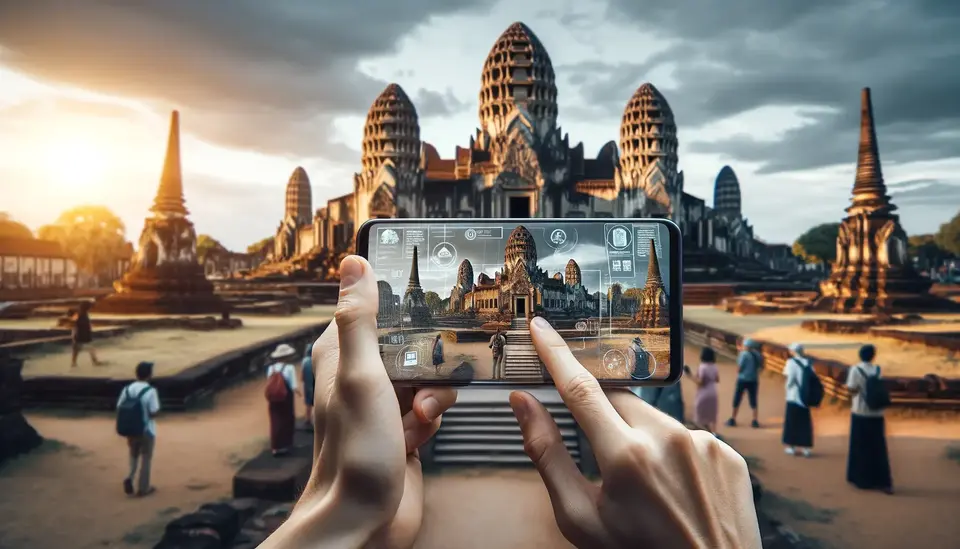
Fashion and Beauty
Interactive Shopping with AR
Another impactful use of AR in retail is seen in the beauty industry. A notable cosmetics brand has launched an AR-powered app that lets customers virtually try on makeup products. This tool uses facial recognition technology to apply makeup to the user’s live image, allowing them to see how different products and shades look on their skin.
Effectiveness and Consumer Insights
This virtual try-on tool has been a significant success. It provides customers with a risk-free way to experiment with new products and make informed purchase decisions. Feedback suggests that this AR experience has not only boosted sales but also increased customer loyalty and trust in the brand, as it empowers consumers to make purchases they are confident about.
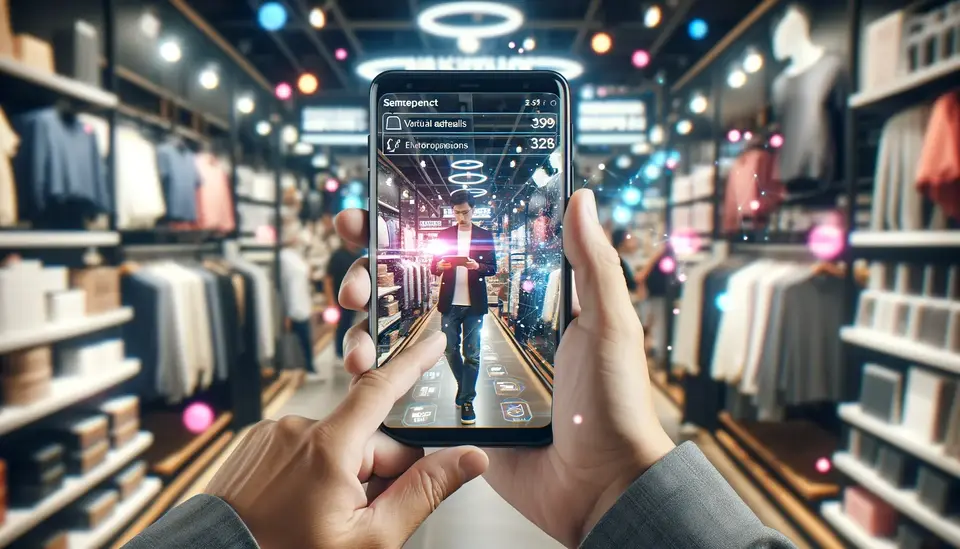
These examples from diverse industries highlight the versatility and effectiveness of AR in marketing. They demonstrate how AR can be tailored to different business needs, creating unique and immersive experiences that resonate with consumers. As technology continues to evolve, we can expect even more innovative applications of AR across various sectors.
Technological Aspects Behind AR Marketing Strategies
The magic behind Augmented Reality (AR) in marketing lies in its advanced technological foundation. This section will delve into the technical aspects that make AR a powerful tool in marketing, from AR filters on social media to interactive advertisements and virtual try-on features. Understanding these technologies will provide insight into how AR creates engaging and immersive experiences for consumers.
AR Filters on Social Media
Technical Foundation and Brand Engagement
AR filters on social media platforms like Instagram and Snapchat utilize advanced facial recognition algorithms and 3D modeling technologies. These filters can apply digital overlays, such as makeup, sunglasses, or even thematic costumes, to users’ faces in real-time.
Brand Impact
For brands, these filters are more than fun novelties; they are powerful marketing tools. When users share their AR-filtered images or videos, it amplifies brand visibility organically. Brands have used these filters for product promotions, event tie-ins, and even to create awareness about social causes. The interactive nature of these filters leads to higher user engagement, and their viral potential makes them a highly effective tool for brand exposure.
Interactive AR Advertisements
Engagement Through Immersion
Interactive AR ads differ from traditional ads by allowing viewers to engage with the content in their environment. Using technologies like spatial recognition and image tracking, these ads can project 3D models of products into the user’s space, viewable and interactable through their mobile devices.
Benefits for Marketers and Consumers
This level of interaction transforms the user’s passive viewing experience into an active one. For marketers, it means higher engagement rates and longer-lasting impressions. For consumers, it provides a novel way to explore products, leading to informed purchasing decisions. For instance, an AR ad for furniture could let users visualize how a sofa looks and fits in their living room, enhancing customer confidence in the product.
Virtual Try-On Features
Combining AI and AR for Personalized Experiences
Virtual try-on solutions in retail, particularly in fashion and beauty, combine AI with AR to create highly personalized user experiences. These technologies use sophisticated algorithms to analyze user data like facial features or body dimensions, ensuring that virtual items like glasses, hats, or clothing fit realistically and proportionally.
Impact on E-Commerce
These features have revolutionized e-commerce by reducing the uncertainty associated with online shopping. Customers can try products from the comfort of their homes, leading to higher satisfaction and lower return rates. Brands also gain valuable insights from user interactions, enabling them to tailor their offerings and improve customer experiences.
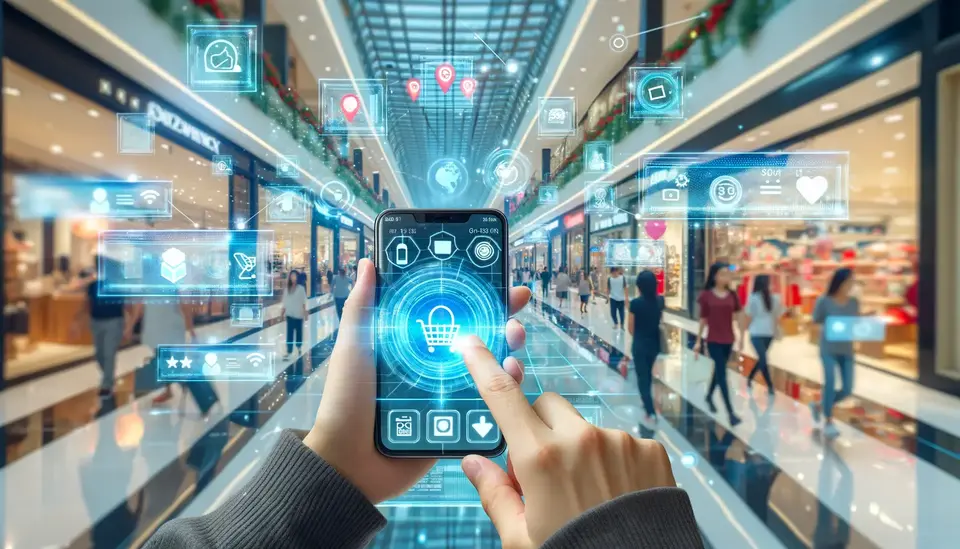
Augmented Reality in Outdoor Advertising
Transforming Public Spaces into Interactive Zones
AR technology is not limited to personal devices; it extends to outdoor advertising as well. Using AR-enabled billboards or installations, passersby can interact with these advertisements using their smartphones. These installations often merge physical and digital elements, creating a memorable and engaging experience.
Wider Reach and Data Collection
This approach not only captures the attention of a broader audience but also provides brands with data on user interactions and behaviors. Such insights are invaluable for refining marketing strategies and understanding consumer preferences.
The technological intricacies behind AR marketing strategies are pivotal in creating engaging and immersive experiences that captivate consumers. As these technologies continue to advance, they offer a canvas for creativity and innovation in marketing. Brands that leverage these AR capabilities are not only staying ahead of the curve but are also setting new standards in consumer engagement.
The Future of AR in Marketing
The future of AR in marketing looks incredibly promising. As technology evolves, we can expect even more innovative and immersive AR experiences. These advancements will likely set new standards for customer engagement, with AR becoming an integral part of the consumer journey. The potential for personalization and interactivity through AR will further shape consumer expectations, offering brands new opportunities to connect with their audience in meaningful ways.
Conclusion
Augmented Reality is not just a fleeting trend in the marketing world; it’s a powerful tool that has begun to reshape how brands interact with their consumers. By providing immersive, interactive experiences, AR has the potential to significantly enhance customer engagement and satisfaction. As technology continues to advance, the possibilities for innovative marketing strategies through AR seem limitless.

